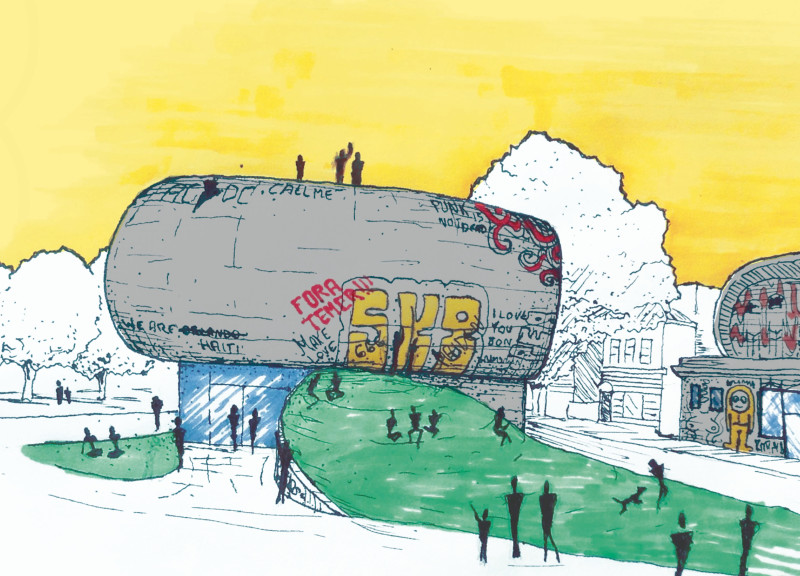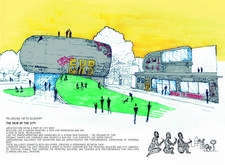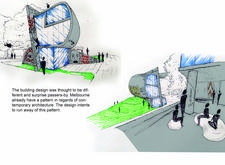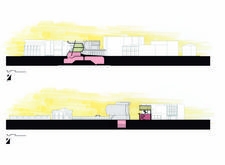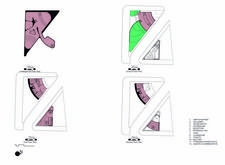5 key facts about this project
### Overview
Located in Melbourne, the Tattoo Academy aims to foster artistic practice and education within a dynamic architectural framework. The design draws upon the metaphor of skin, reflecting the primary art form represented at the institution—tattooing. This approach engages the public and integrates educational spaces with an emphasis on interaction and expression.
### Architectural Form and Materiality
The building features a sculptural facade characterized by curvilinear shapes and varying elevations that challenge traditional architectural norms. These organic forms introduce fluidity and dynamism, positioning the structure distinctively within its urban context. The exterior showcases a variety of graffiti art and murals, not only narrating local street culture but allowing ongoing engagement with visiting artists, thereby reinforcing the multifaceted nature of identity and creativity in tattoo culture.
Material selection is purposeful, utilizing concrete for its durability and sculptural potential, while glass elements enhance transparency to promote openness and connectivity. Additionally, a green roof system provides both ecological benefits and recreational space, reflecting a commitment to sustainability within the design.
### Spatial Configuration
The interior layout is thoughtfully organized to support educational and community functions. Ground and first floors are designed with galleries and classrooms that encourage an interactive environment, seamlessly integrating public access. Underground exhibition spaces benefit from natural light through strategically placed skylights, enhancing the overall user experience.
The vertical design of the building creates layered spaces that promote movement and interaction, maximizing usable area without a significant increase in the building's footprint. This nuanced organization aims to enhance the flow of individuals through both educational and communal activities, reinforcing the academy's role as a cultural hub within Melbourne’s vibrant artistic community.


